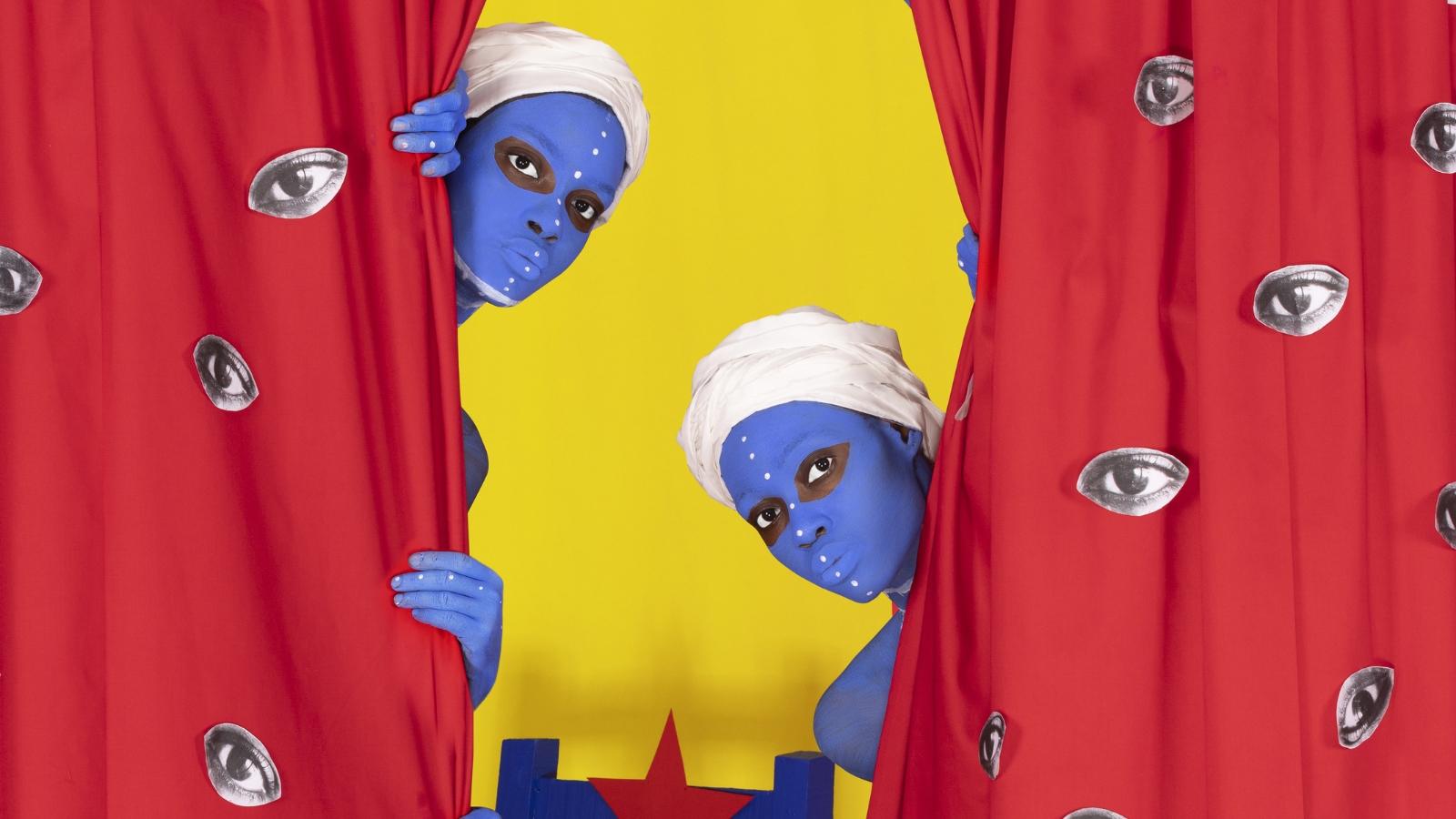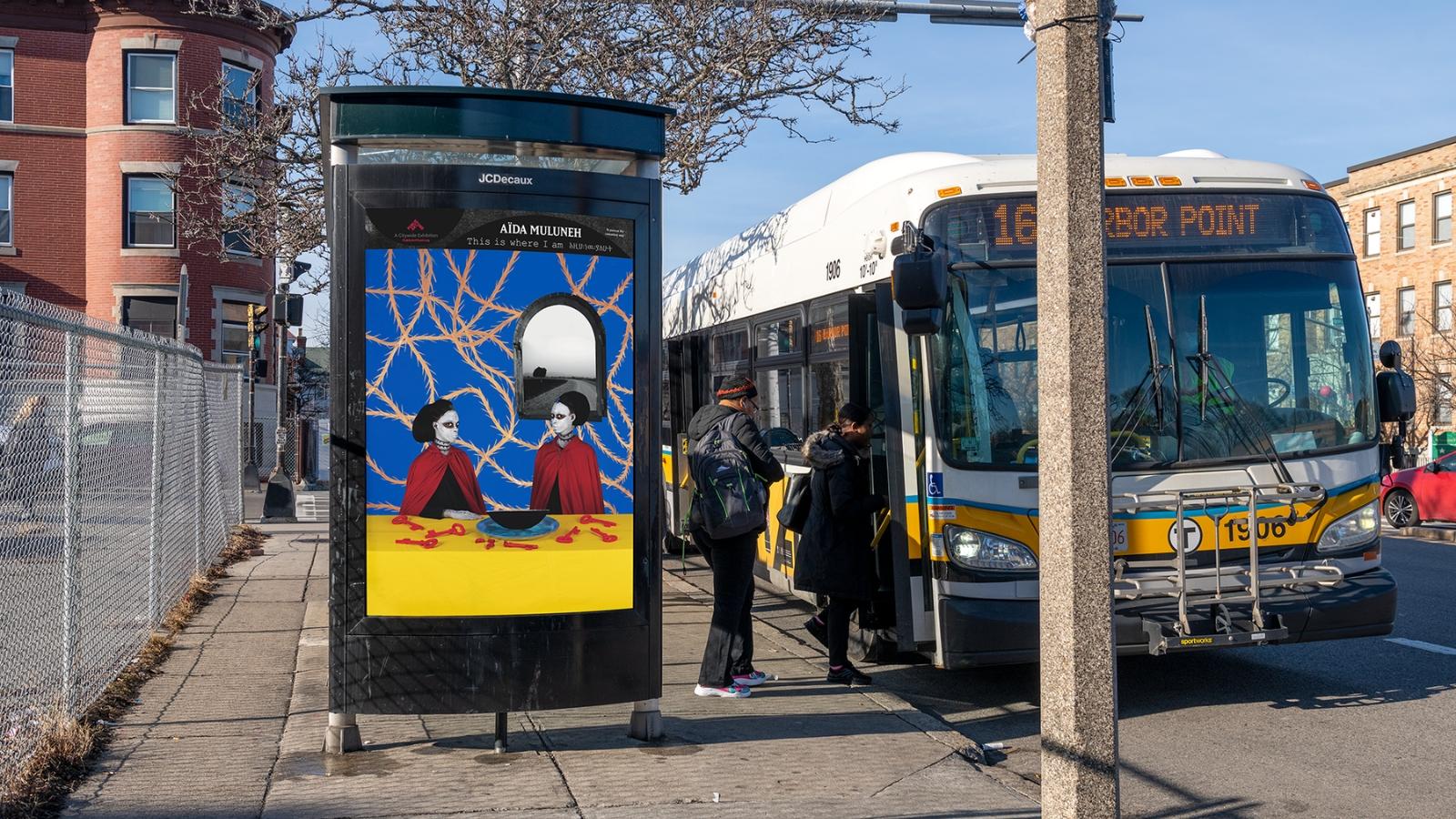Aïda Muluneh’s public art photo exhibit is ‘a love letter to Ethiopia’
Commuters in Boston, New York, Chicago and Abidjan, Ivory Coast, might run into a photography exhibit right at their bus stop.
Ethiopian photographer, artist and educator Aïda Muluneh is showcasing the culture of her birth country in a series of 12 photographs displayed at more than 300 bus shelters across these US cities and the Ivorian capital, where she is based.
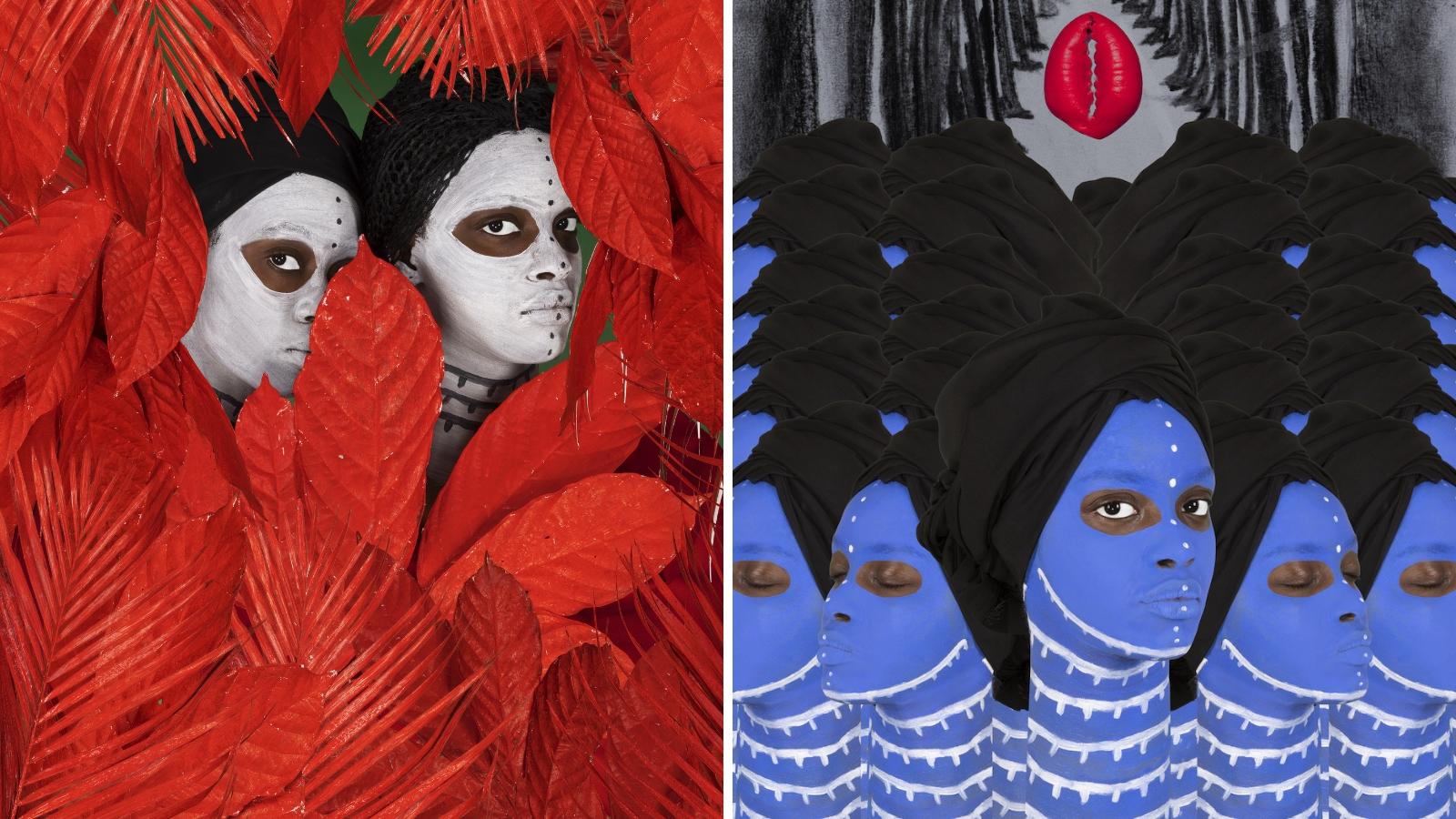
Her latest body of work is called “This is where I am,” which comes from a 1974 poem by the same name by Ethiopian writer Tsegaye Gabre-Medhin.
“The work is almost like a love letter to Ethiopia,” Muluneh said.
Muluneh seeks to capture her country’s national, political and cultural identity, while also portraying her own experiences as an Ethiopian woman and immigrant.
“We sort of carry our culture regardless of where we are. So in my home, it was very important to stay connected to my birthplace. And I wasn’t allowed to speak English in the house, because my mother felt it was very important to know our native tongue. So, these things were deeply embedded for me even though I spent most of my life abroad,” Muluneh said.
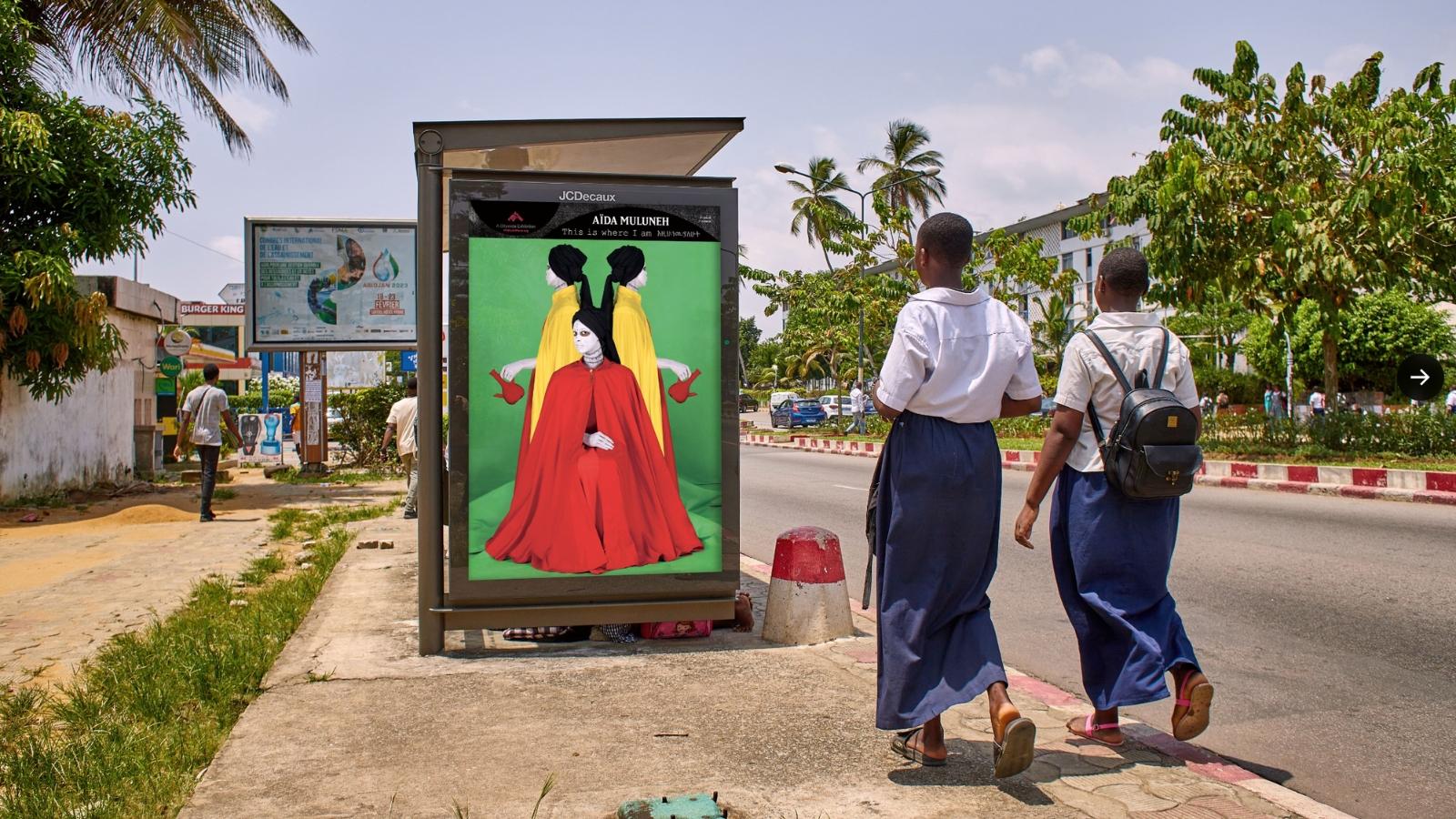
Curator Katerina Stathopoulou commissioned the series with the Public Art Fund, a New York-based nonprofit dedicated to presenting art in public places.
“The goal of public art, in general, is to have art accessible, on view, free of charge, 24 hours a day,” Stathopoulou said.
That mission was a selling point for Muluneh.
“Art should not be the exercise of the elite. It has to be something that engages all stakeholders and the full community.”
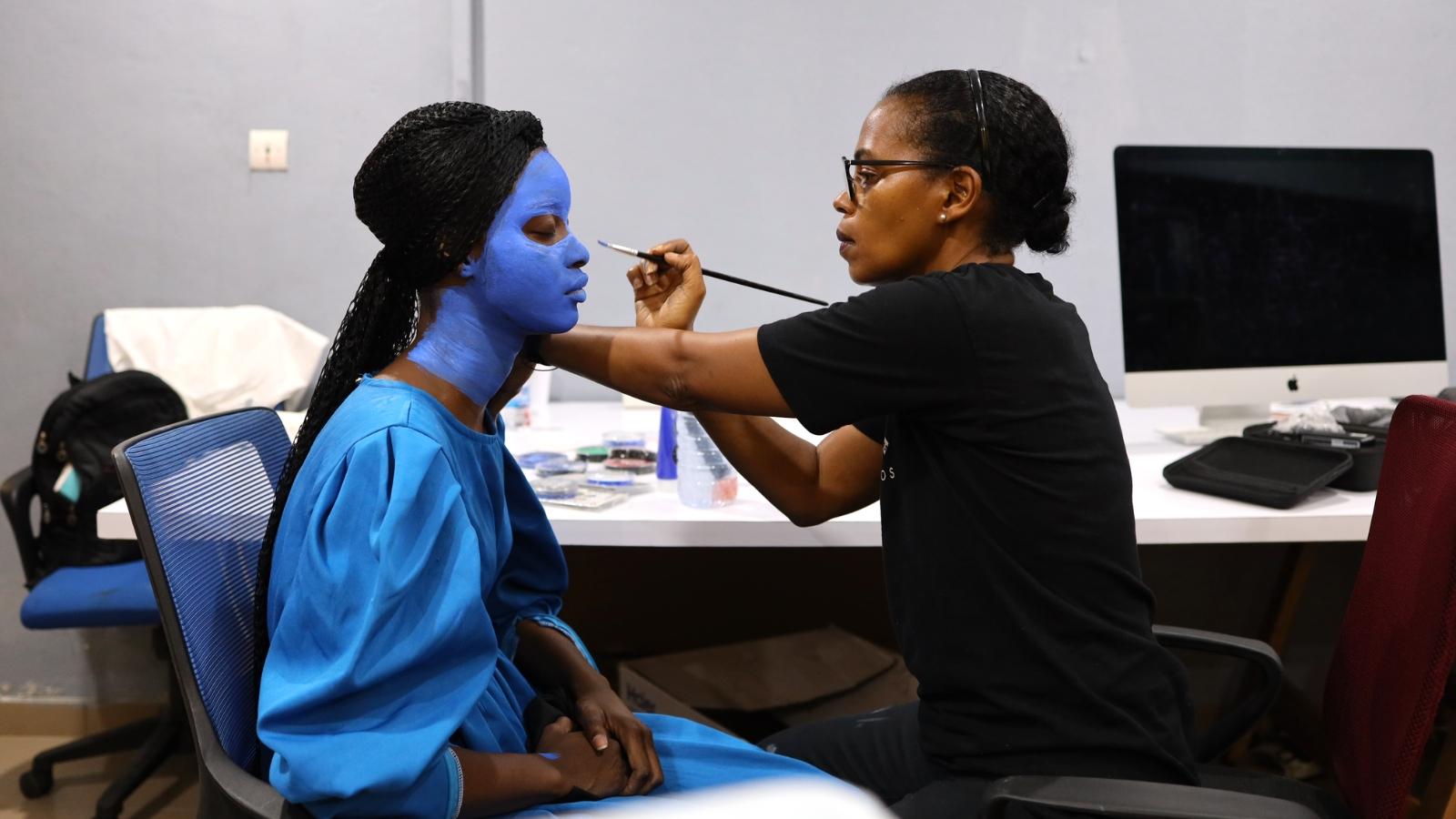
At a busy intersection on Massachusetts Avenue, one of Boston’s main drags, the bus stop showcases the photograph called “To speak in silence.”
It shows three women wearing yellow and red robes standing in front of a green background that is typically used to add special effects in post-production for films and photographs.
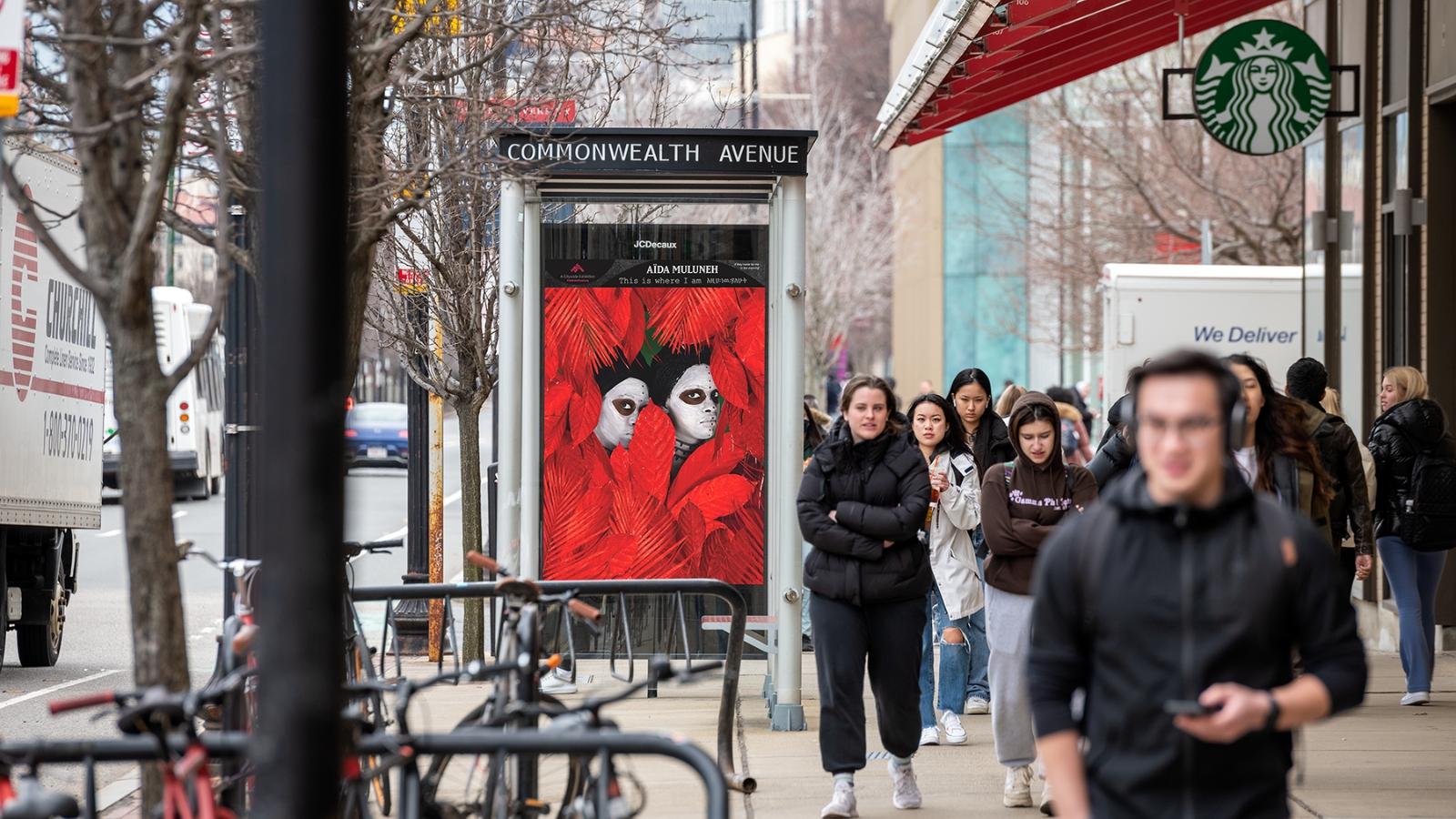
That’s what Muluneh intended to do. But once she saw the green coupled with the red and yellow robes, she decided to keep it as is.
“It became like symbolic of the Ethiopian flag, because these are the core colors within our flag,” Muluneh said.
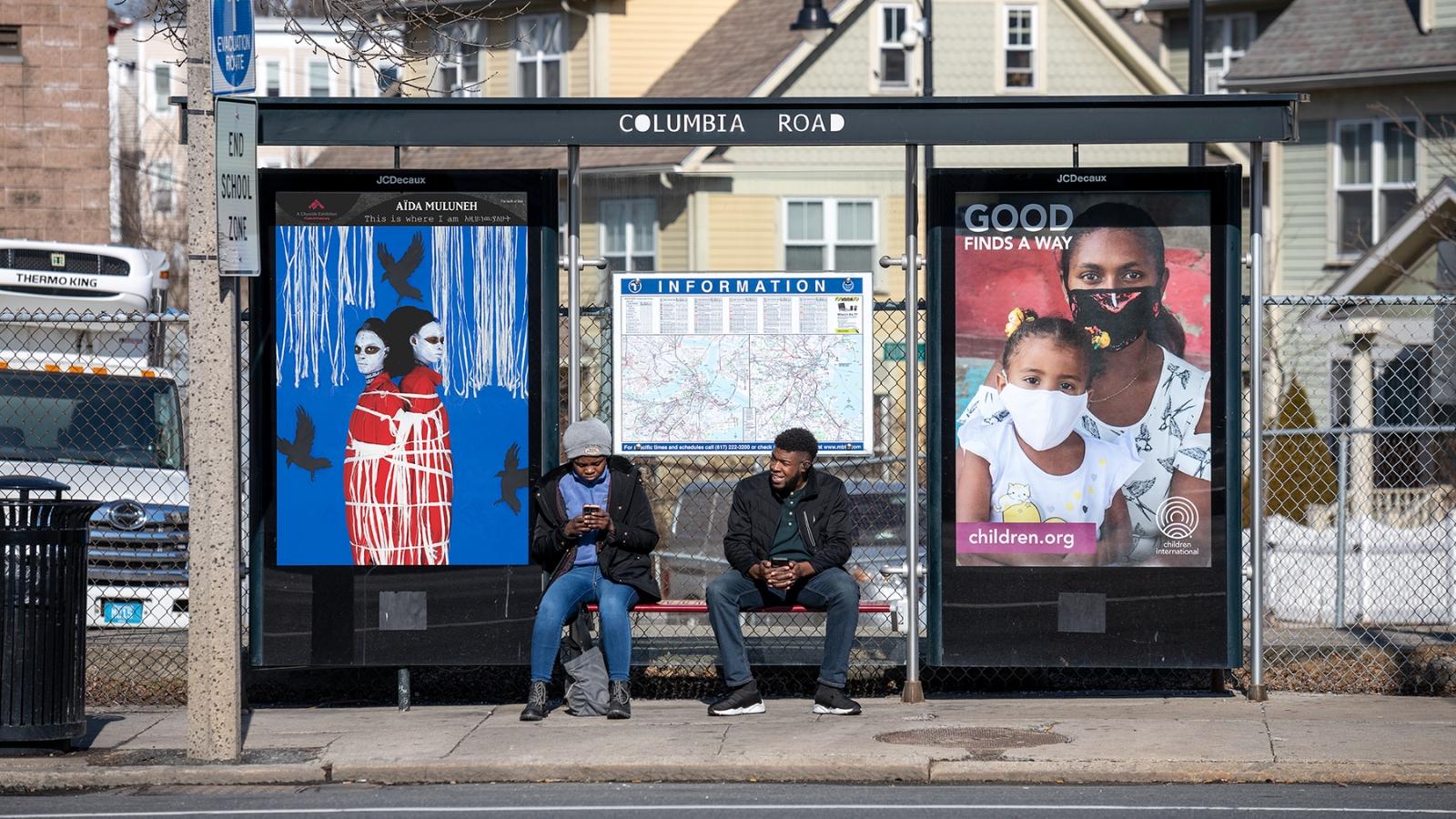
Those colors caught the attention of Netsanet Woldesenbet, the co-owner of Lucy Ethiopian Cafe and Restaurant, which, coincidentally, is across the street from the bus shelter.
“I was so happy to see the colors, you know, because it’s very bold and bright. Yes, absolutely, yes.”
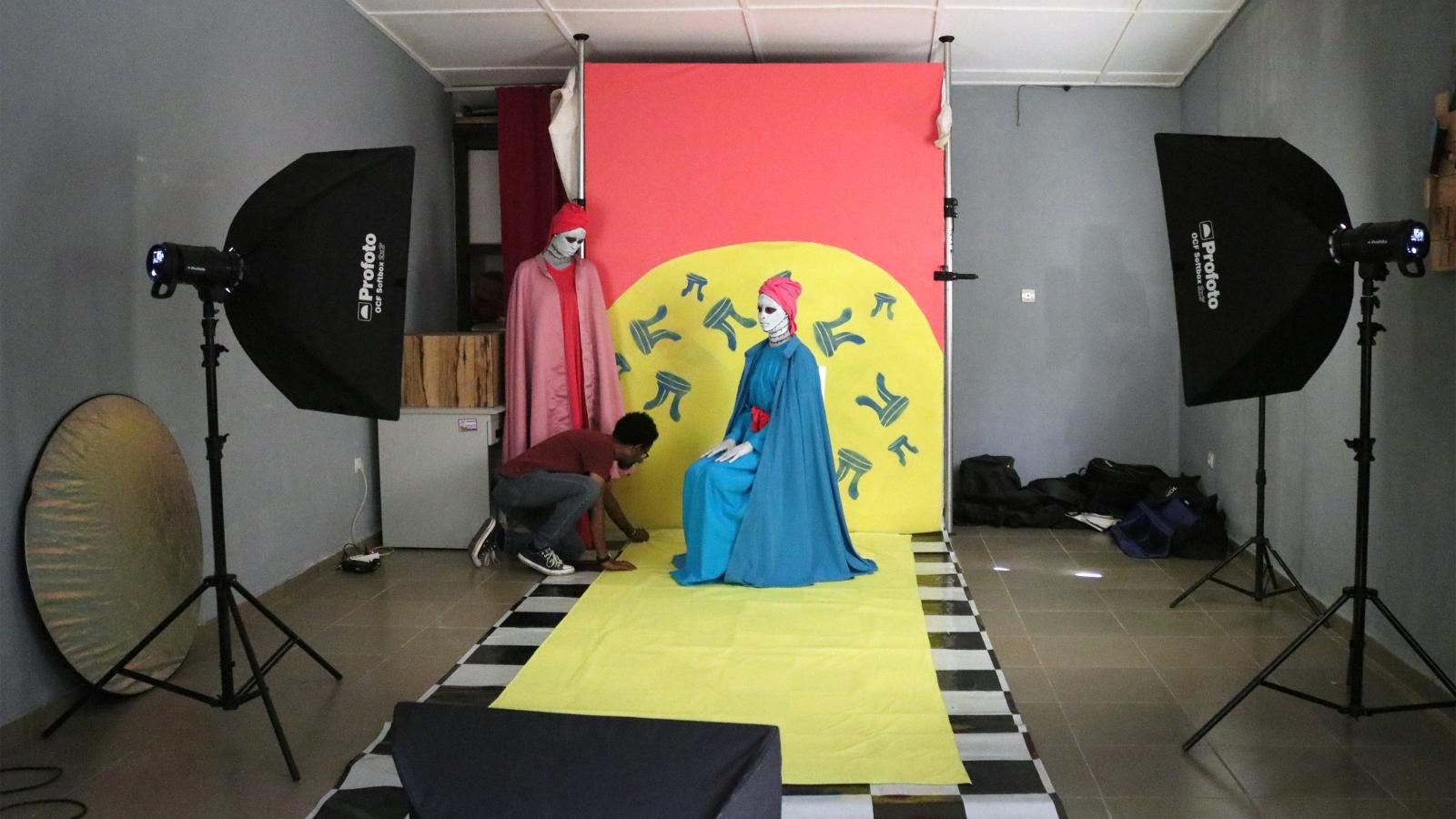
Woldesenbet said she doesn’t see Ethiopian art around town very often, and she’s thrilled to now have work by an Ethiopian artist outside her cafe windows.
Muluneh says her primary audience is Ethiopians around the world. But she hopes everyone will find meaning in her work and also get the curiosity to go and explore other artists from the African continent.
“We are trying to build bridges. Because I think that is the only way we can really address the misconceptions and also develop new perceptions as it relates to Africa,” Muluneh said.
